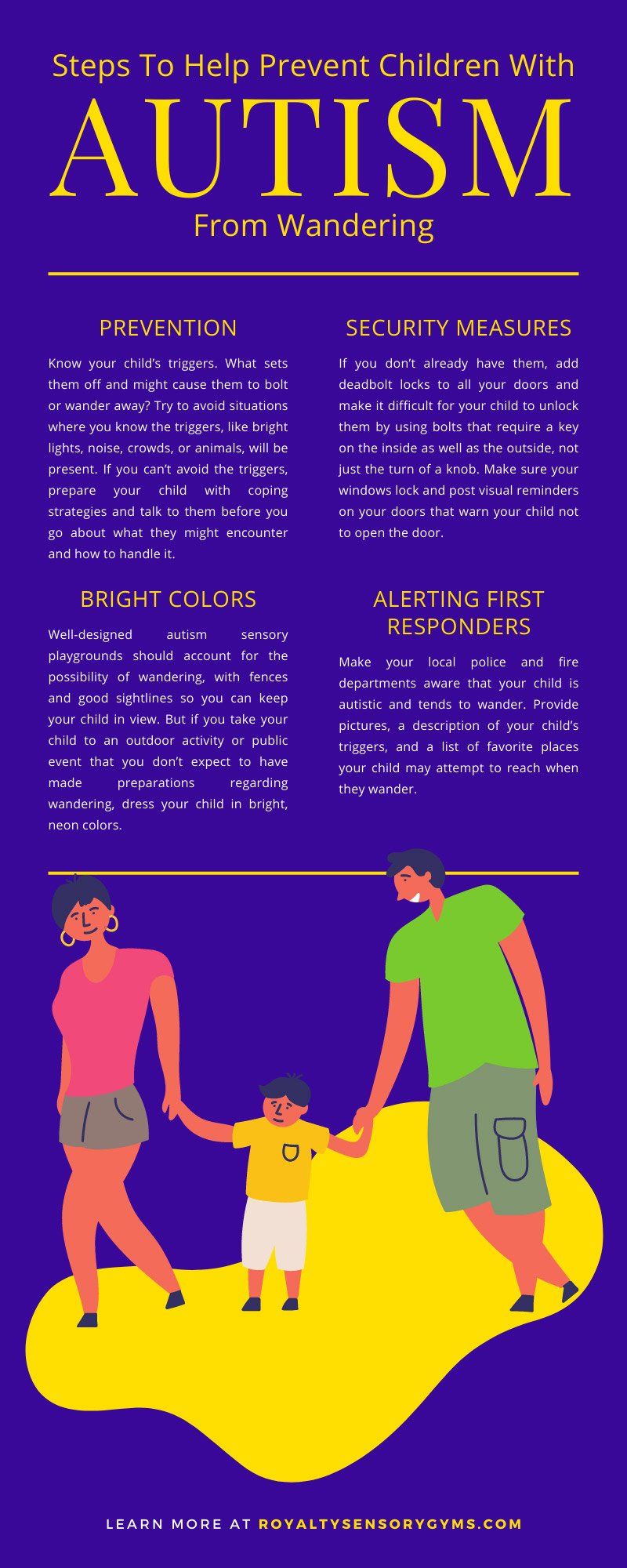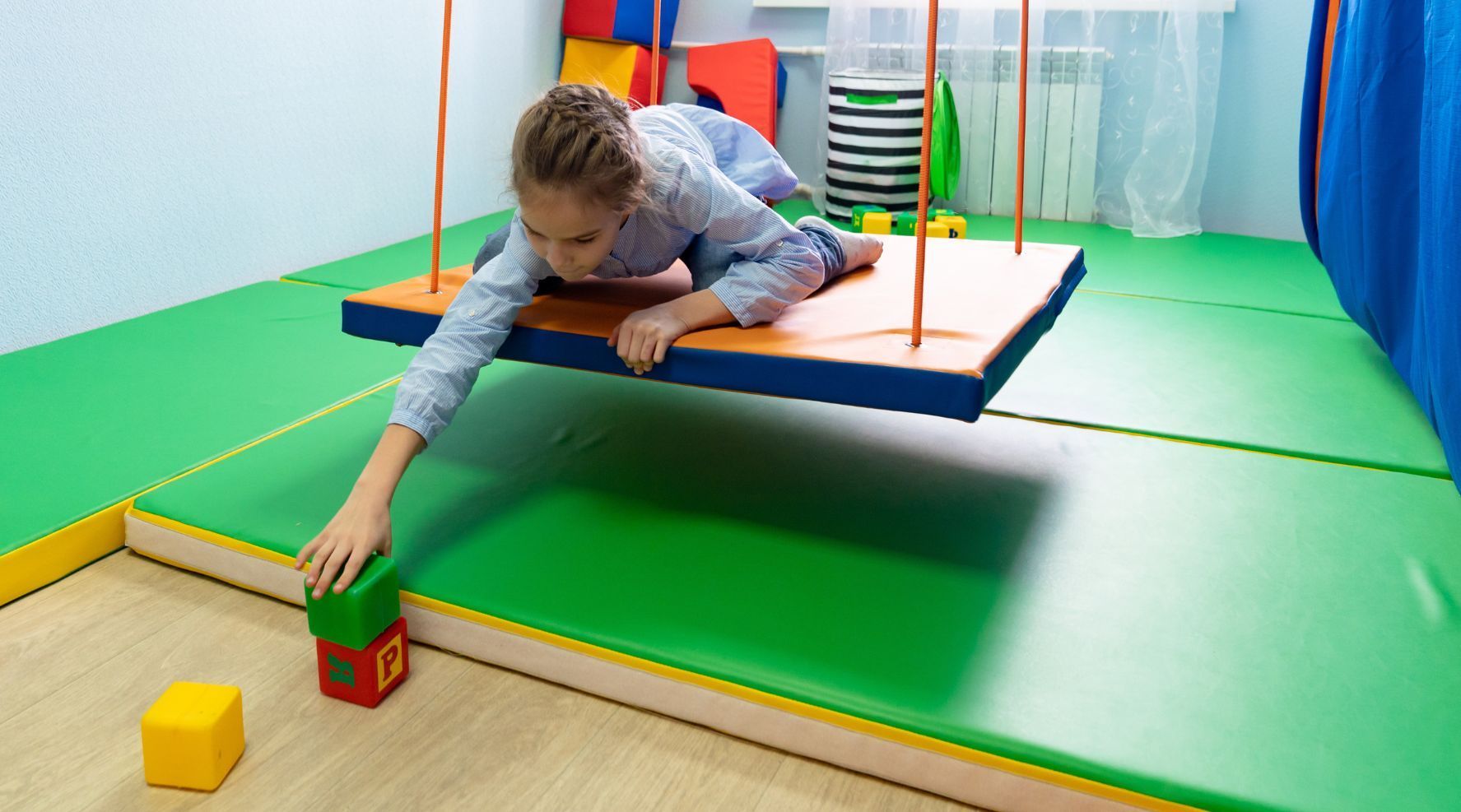7 Steps To Help Prevent Children With Autism From Wandering
All parents fear losing sight of their children. It’s the stuff of parental nightmares: look away for just a split second, and your child has disappeared.
For parents of autistic kids, the fear is ever-present, and the vigilance can be exhausting. Wherever they go with their autistic child, they see danger and the possibility their child could bolt and run—into a street, a public building, or woods by a park.
Every autism parent comes up with their own checklist to keep their child safe. Some kids will run if they see a dog or hear a siren. Others will challenge any type of physical barrier by climbing, opening doors or gates, or even crawling under fences.
Some kids wander until they find a calming sensory input, like water, or to visit favorite places like train stations, where they may love to watch trains whoosh by. However, both such areas can be life-threatening. An alarming percentage of autistic children who wander die tragically by drowning, and the next most common cause of death for an autistic child who wanders is being injured by a car.
Keeping track of an autistic child who can’t stand being around more than one person, panics at certain sounds, or melts down if it’s time to get off the swings is exhausting.
Parents can never let their guards down. But these seven steps to help prevent children with autism from wandering can ease some of the strain of keeping an autistic child within a defined area and in sight.
Prevention
Know your child’s triggers. What sets them off and might cause them to bolt or wander away? Try to avoid situations where you know the triggers, like bright lights, noise, crowds, or animals, will be present. If you can’t avoid the triggers, prepare your child with coping strategies and talk to them before you go about what they might encounter and how to handle it. Remind them that you’ll be there for them and that you can get through it together.
Security Measures
If you don’t already have them, add deadbolt locks to all your doors and make it difficult for your child to unlock them by using bolts that require a key on the inside as well as the outside, not just the turn of a knob. Make sure your windows lock and post visual reminders on your doors that warn your child not to open the door.
Install an alarm system that tells you when a door or window has been opened and a video doorbell that allows you to see where your child is going when they step outside. Fence your yard to a height your child can’t climb, with secure gates they can’t open. If you’re not sure you’ve covered every wandering risk at home, consult a home security expert and explain your concerns. They may discover more ways you can secure your home to prevent an autistic child from wandering off.
Bright Colors
Well-designed autism sensory playgrounds should account for the possibility of wandering, with fences and good sightlines so you can keep your child in view. But if you take your child to an outdoor activity or public event that you don’t expect to have made preparations regarding wandering, dress your child in bright, neon colors. That way, if your child wanders, you’ll be able to see them more easily. You’ll also have a description for searchers that will help them locate your child more effectively than just “khaki shorts and a blue shirt.”
Alerting First Responders
Make your local police and fire departments aware that your child is autistic and tends to wander. Provide pictures, a description of your child’s triggers, and a list of favorite places your child may attempt to reach when they wander. Most first responders have received at least some training in how to communicate with autistic people, and some may even have autistic kids of their own. They’ll be open to your concerns.
GPS Devices
Technology is your friend when it comes to an autistic child prone to wandering. Use ID bracelets equipped with GPS or location devices similar to those used to find stolen cars. This will help you and searchers find your child quickly and recognize the severity of the danger to your child present in the place they’ve wandered off to visit.
Enlisting Neighbors
Make all your neighbors aware of your child’s autism, and ask them to help you keep an eye out if your child wanders. Autism Speaks has a page of resources, including a caregiver toolkit, to help you inform neighbors and prepare caregivers to watch out for wandering and respond immediately if it happens.
It’s essential to alert neighbors who have swimming pools of the heightened danger to your child. All such pools are supposed to be fenced to minimize the dangers to all neighborhood kids. But children can drown in a few inches of water in a kiddie pool if they panic or if they’re injured or too little to understand how to extricate themselves.
Teach Your Child About Safety
With some autistic kids, wandering may be inevitable. Most important to their safety is making sure your child knows how to swim! Even if it’s just floating and dog paddling, swim lessons could save your child’s life. This could be exceedingly difficult if your child has a strong aversion to water. But exposure therapy, private lessons at a time when the pool isn’t crowded, and loads of patience can get you through it.
Simple phones designed for little kids are now available. They make it possible for kids to call their parents and for parents to know where their children (or more accurately, their phone) is at all times.
To prevent an autistic child from wandering, make a checklist of your preparations and revise it as necessary as your child grows and their routine changes.
If your child wanders, time is of the essence. Have an emergency plan in place with defined roles for everyone in the family and neighbors too. Assign who will be responsible for calling the police, who will alert neighbors, and who will immediately search your home and your child’s favorite destination.
Before wandering occurs, sit down and list every significant location and person that may be involved in a wandering incident. This includes teachers, therapists, recreation leaders, neighbors, and caregivers, along with first responders.
Give them all a copy of your emergency plan, your contact information, a list of what triggers your child to wander, run, or bolt, and a photograph of your child. Make sure you update your emergency plan as necessary whenever there’s a change in your child’s routine, school, therapy, or activities.






